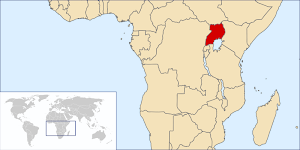KIVA.ORG: First, thank you Matt and Jessica Flannery for inventing Kiva. I have great admiration for what you started, especially since you invented an entirely new model of microfinance funding. Without your effort and creativity, Nicholas Kristof from the New York Times would not have written about a baker in Afghanistan whose business was funded by a Kiva loan funded in part by Kristof himself. When I read that article I just knew I had to get involved.
Also, thank you Anushka Ratnayake, the head of the Kiva Fellows program. Anushka permitted me to volunteer and to make my own unique contribution to poverty reduction. Most people don’t know it, but Anushka, a Modern Literature major, is the guiding force behind the Kiva Fellows Blog. As you can tell from my frequent posts, I enthusiastically took advantage of her brainchild to blog away about my experiences and observations in Uganda. Thanks Anushka for having the foresight to create a space for all Kiva Fellows to share ideas and experiences from our remote corners of the world.
Finally, thank you Ben Elberger, my microfinance boss at Kiva. Ben is one of the hardest working young people I have ever met. The rumor is Ben never sleeps, and I believe it. He always seemed to be on-line when I emailed him from half way around the world, no matter what time of day or night it was in San Francisco.
Ben is responsible for managing Kiva’s business with the two microfinance institutions I worked for; Share an Opportunity Microfinance, Ltd, and BRAC, Uganda. He was always interested in my input and suggestions.
I know for sure Ben is hard working because he did his utmost to keep Kiva from running out of loans during the holidays. Due to internet connection problems in Uganda, we were unable to post loans on the Kiva website. Ben worked throughout his Christmas vacation to transcribe word documents and photos I e-mailed him to post about 150 group loans. In my opinion, that was above and beyond the call of duty. Way to go Ben!
MFI’S: Thank you Samuel Mayanja Ssekajja (Sam) and Knondoker Ariful Islam (Mr. Arif), my two bosses at SAO and BRAC respectively. They gave me guidance, insight, and a plate full of work to do while I was in Uganda. My primary motivation for volunteering as a Kiva Fellow was to learn about the business of poverty reduction. Thanks to Sam and Mr. Arif I got everything I hoped for. There was never a dull moment under the direction of these two natural born leaders.
I also want to thank all the employees of SAO and BRAC. It was a joy to work beside these dedicated young people. I took great pleasure in making my small contribution, because I knew how much they appreciated my effort.
BORROWERS: All the borrowers I met in the course of my activities as a Kiva Fellow made me feel like a “million dollars”. These are some of the most genuine and sincere people I have ever known. I found nobility and remarkable family values among the poor residents of Kampala that I have not observed elsewhere. To Florence and Regina and all the other borrowers I met; thank you for sharing your culture and your values with me. You made a lasting impression.
MY FAMILY: Three months is a long time to be away from home. I want to thank my wife of 31 years, Mary Therese, for not objecting to my somewhat unconventional idea of volunteering in Africa. I also want to thank my daughter Molly who rearranged her semester break to visit me. She raised my spirits at the critical two month point in my stay, just when I was beginning to get really home sick. I also appreciated every email and blog comment I received in Uganda. Thank you to the authors of all those messages.
KIVA FRIENDS: Finally, I want to say thank you to all the generous supporters who frequent the Kiva Friends website and who contributed to two women I wrote about in my Kiva Fellows blog; Florence Kaluuba of the Mirembe Youth Development Projects and Regina. You will never know how much pleasure it gave me to distribute your money. No matter what explanation I offered to the contrary, your gifts were always treated as if they were a gift from me. Thank you for allowing me to serve as your proxy and to bask in the glow of so much heartfelt appreciation.
I am a different, and hopefully better, person than I was before Uganda. I sincerely thank Kiva and everyone who had a hand in my transformation.
.JPG)


